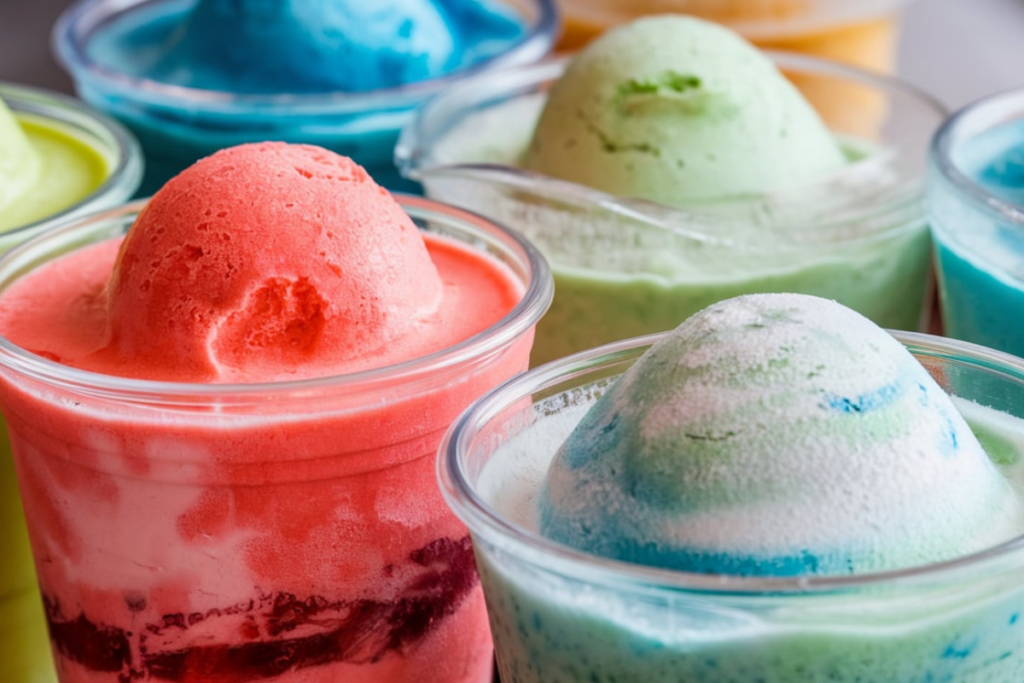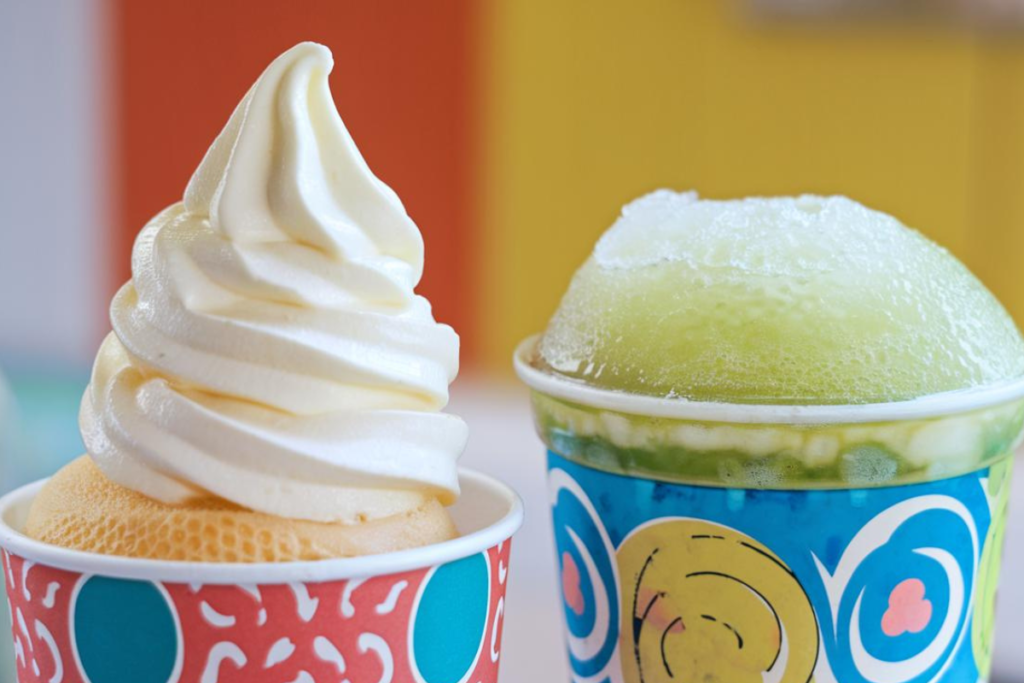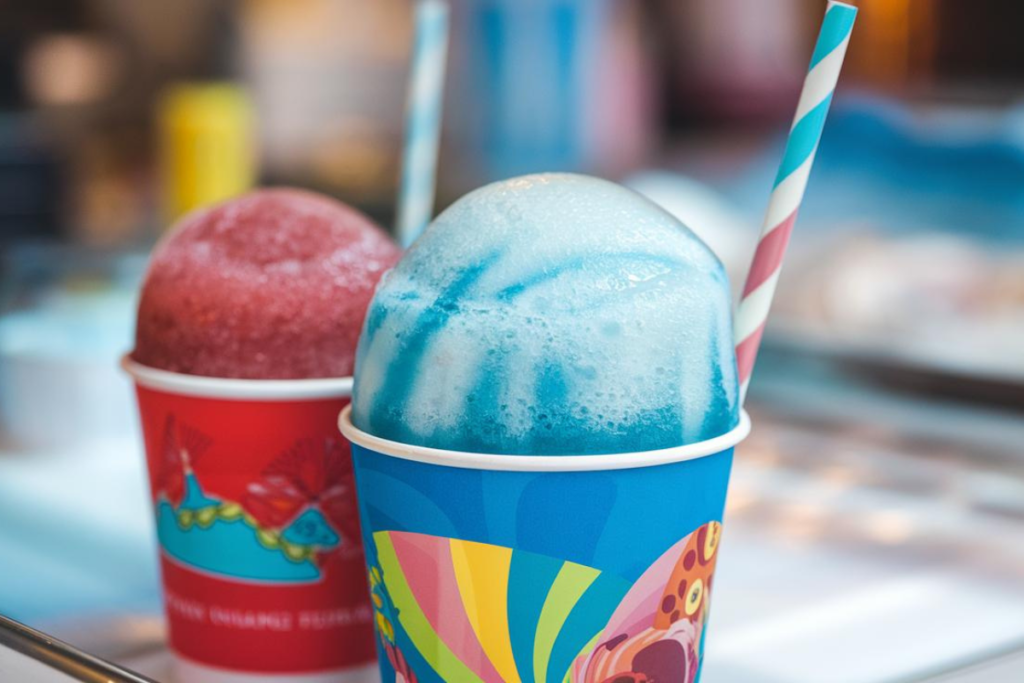When it comes to frozen beverages, ICEEs and slushies often come to mind. These icy treats are popular choices, especially during the summer months. But have you ever wondered if they’re the same? Although they might seem similar, several differences set them apart. In this article, we’ll explore what makes ICEEs and slushies unique, how they’re made, and why they’ve become cultural icons.
What Are ICEEs and Slushies?
ICEEs are a type of frozen carbonated beverage that originated in the 1960s. The ICEE brand was created by Omar Knedlik, who wanted to develop a refreshing, fizzy drink that could stay cold longer. The result was a slushy, semi-frozen drink with a smooth texture and bubbles that give it a light and fizzy feel. ICEEs are typically found at places like movie theaters, convenience stores, and amusement parks.
In contrast, slushies are a more general term for any drink made by freezing flavored liquid into a slush. Unlike ICEEs, slushies are usually not carbonated, and they can be made from a variety of bases, including fruit juices, syrups, and soft drinks. Slushies often have a grainier consistency due to the larger ice crystals. They’re popular at gas stations, cafes, and fast-food restaurants.
The Origins of ICEEs and Slushies
The history of the ICEE brand is fascinating. Omar Knedlik, a Dairy Queen owner, began serving accidentally frozen sodas to his customers in the early 1960s. These slushy sodas quickly became a hit, leading Knedlik to create a machine that would consistently produce this frozen treat. This invention marked the birth of the ICEE, a brand synonymous with frozen carbonated beverages.
Slushies, on the other hand, have a more diverse and somewhat murky origin. While no single individual can claim credit for inventing the slushie, the concept of freezing flavored liquids has existed for centuries. The modern slushie likely evolved from various frozen drinks that became popular in the 20th century. Today, slushies are available in countless flavors and variations, making them a staple in the world of frozen beverages.
Key Differences Between ICEEs and Slushies
Though ICEEs and slushies share similarities, several key differences distinguish them:
- Texture and Consistency: ICEEs have a smooth, creamy texture due to carbonation, which keeps the ice crystals small and uniform. Slushies often have a grainier texture, with larger ice crystals that give the drink a more crunchy feel.
- Flavor Variety and Availability: ICEEs typically come in a limited number of flavors, often focusing on classic options like cherry, blue raspberry, and cola. Slushies, however, can be made in a virtually endless array of flavors, from tropical fruits to soda-based varieties.
- Equipment Used: The machines used to make ICEEs are specifically designed to create a carbonated, slushy beverage. These machines use a process that combines freezing and carbonation to produce the iconic texture of an ICEE. Slushies, in contrast, are made in simpler machines that freeze a non-carbonated liquid, resulting in a different texture and mouthfeel.

Branding and Marketing: ICEE vs. Slushie
The branding and marketing strategies behind ICEEs and slushies also contribute to their differences. The ICEE brand has become iconic, largely due to its consistent presence in popular venues like movie theaters and amusement parks. The distinctive red, white, and blue logo, along with the playful ICEE polar bear, has helped cement the brand’s identity.
Slushies, by contrast, are more of a generic term for any slushy drink. While some companies have tried to brand their own versions of the slushie, the term remains more associated with the drink type than with a specific brand. This allows for greater variation in the types of slushies available, as different companies and locations put their unique spin on the classic frozen treat.
Cultural Significance and Popularity
Both ICEEs and slushies have carved out their own place in pop culture. They often appear in movies, TV shows, and even music videos. For many, these frozen drinks are associated with nostalgia and childhood memories, whether it’s enjoying an ICEE at the movies or grabbing a slushie from the local convenience store.
Regionally, there are differences in the popularity of ICEEs versus slushies. In the United States, ICEEs are more common in places like the Midwest and South, where they’re often featured as a summer treat. Slushies, with their broader range of flavors, tend to be more popular in urban areas where consumers seek variety and customization in their frozen drinks.

The Science Behind the Freeze: How ICEEs and Slushies are Made
Understanding how these frozen beverages are made can provide insight into their differences. ICEEs are created using a special machine that combines freezing and carbonation. The machine continuously stirs the liquid as it freezes, preventing large ice crystals from forming and resulting in a smooth, slushy texture with tiny bubbles.
Slushies, on the other hand, are made by freezing a flavored liquid, but without carbonation. The process typically involves stirring or blending the liquid as it freezes to break up the ice crystals. The resulting texture is often grainier than that of an ICEE. The absence of carbonation in slushies also means they don’t have the same light and fizzy quality as ICEEs. To learn more about the impact of carbonation on frozen drinks, check out this insightful article.
Nutritional Differences Between ICEEs and Slushies
When it comes to nutrition, ICEEs and slushies are similar in some respects but differ in others:
- Caloric Content: Both ICEEs and slushies are relatively high in sugar, which contributes to their caloric content. However, the exact number of calories can vary depending on the flavor and size of the drink. Generally, an ICEE might have fewer calories per ounce than a slushie due to its carbonation, which adds volume without adding calories.
- Ingredients: ICEEs typically contain carbonated water, high-fructose corn syrup, artificial flavors, and colors. Slushies, meanwhile, may be made from fruit juices, syrups, or soda, in addition to sugar and flavorings. The specific ingredients can affect the flavor and nutritional content of the drink.
- Health Implications: Due to their high sugar content, both ICEEs and slushies should be consumed in moderation. People with dietary restrictions, such as those avoiding sugar or artificial colors, may need to be cautious about indulging in these frozen treats.
DIY: Making ICEEs and Slushies at Home
For those who love frozen drinks but want to enjoy them at home, making ICEEs and slushies in your kitchen is easier than you might think:
- Homemade ICEEs: While you may not have access to an ICEE machine, you can still make a similar treat by blending ice, a carbonated drink (like soda), and your favorite flavoring syrup. The key is to blend until the mixture reaches a smooth, slushy consistency.
- Homemade Slushies: Making slushies at home is even simpler. Just freeze your favorite juice or flavored drink until it’s semi-solid, then blend or stir until it reaches the desired consistency. You can also add fresh fruit or other ingredients to create unique flavors. For a step-by-step guide, check out this recipe for making slushies at home.
Frequently Asked Questions (FAQs)
Are ICEEs and Slushies the Same?
No, ICEEs and slushies are not the same. While both are frozen beverages, ICEEs are carbonated and have a smooth texture, while slushies are typically non-carbonated and have a grainier texture.
What’s the Main Difference Between an ICEE and a Slushie?
The primary difference is the carbonation. ICEEs are fizzy and smooth due to the carbonation, while slushies are not carbonated and have a more granular texture.
Can I Make a Slushie with an ICEE Machine?
No, you cannot make a slushie with an ICEE machine because the machine is specifically designed to carbonate the drink while freezing it, which is not how slushies are made.

Which Is Healthier, an ICEE or a Slushie?
Neither drink is particularly healthy due to their high sugar content. However, the specific nutritional content can vary based on the ingredients used. Generally, both should be consumed in moderation.
Common Misconceptions About ICEEs and Slushies
- All Frozen Drinks Are the Same: One common misconception is that all frozen drinks are identical. However, as we’ve discussed, ICEEs and slushies have different textures, flavors, and preparation methods, making them distinct beverages.
- Slushies Are Just Melted ICEEs: Another myth is that slushies are just melted or poorly made ICEEs. In reality, the two drinks are made differently, with ICEEs being carbonated and slushies not.
- ICEEs and Slushies Are Healthy: While they might be refreshing and delicious, both ICEEs and slushies are high in sugar and should be enjoyed in moderation. It’s important to be mindful of their nutritional content, especially if you’re watching your sugar intake.
Conclusion: The Final Verdict
In the battle between ICEEs and slushies, there’s no clear winner—only personal preference. If you enjoy a smooth, fizzy texture, an ICEE might be your go-to frozen treat. On the other hand, if you prefer a drink with a bit more texture and flavor variety, a slushie might be more your style. Regardless of which one you choose, both offer a refreshing way to cool down on a hot day. So why not try them both and decide for yourself?
Whether you’re sipping on a classic cherry ICEE at the movies or enjoying a tropical fruit slushie from your local cafe, these frozen drinks offer a delightful escape from the heat and a nostalgic nod to simpler times. So next time you’re in the mood for a frozen treat, remember the differences between these two iconic beverages and choose the one that suits your taste buds best.

